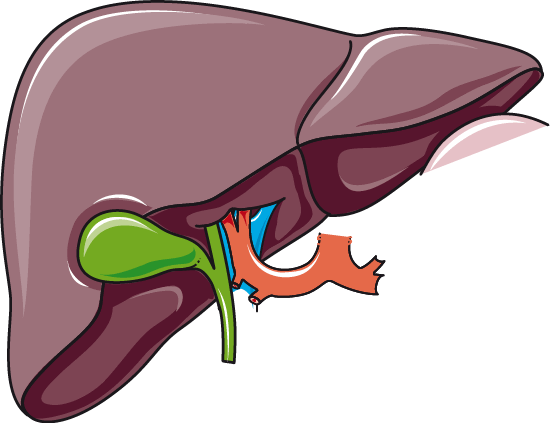Fasting and aging
The effects of fasting and other diets seem to have an interest in aging processes.
Fasting is the prolonged deprivation of food. The fasting phase is considered to begin about 6 hours after the last meal in humans. The term “fasting” includes many different methods and we will discuss them in detail in this series of articles.
The ability to resist the absence of food is highly species-dependent and is explained by evolutionary mechanisms leading to different reserve storage capacities. This is due to random mutations that have been reinforced as potentially giving an advantage in survival.
For example, bears can hibernate or travel very long distances, like migratory birds, and all this without food.
Humans are relatively well equipped to cope with food scarcity. This allowed our ancestors to survive through very difficult times – times when food was not readily available.
In several species, different fasting strategies, which we will see in detail, have been experimented with and sometimes give impressive results regarding aging and the development of age-related problems. This is the case, for example, of rhesus monkeys[1].

This dossier will consist of 4 articles: we will first look at what fasting is, then we will look at the reasons for the effectiveness of certain diets in the aging process.
The focus will then be on the metabolism behind fasting and the biomarkers that measure its effects.
Finally, we will discuss genetic variability in responses to different fasting methods in the face of aging.
Fasting throughout History
Historically, famines have been a recurring problem for our species. Our chance in this context is to be able to store an excess supply of food so that it can be used in times of famine. This lack of input could be equated to forced fasting and has been a determining factor in the long-term evolution of our species.
The practice of “voluntary” fasting is found in many cultures and in several monotheistic religions that have periods of fasting (Lent, Ramadan) in their rites. The reasons given for these rituals are obviously spiritual, but can it be that they were also implemented by empirical observation of the benefits of fasting?
Energy storage and production mechanisms: the foundations of aging?
Our body draws its energy from two main sources: sugars and lipids. It decomposes them in order to be able to exploit them; it metabolizes them.

- Glucose, a type of sugar, comes from the carbohydrates we eat. These carbohydrates are degraded into glucose by endogenous enzymes but also by the action of the intestinal microbiota. They are sometimes modified further to be used by our organs as an energy source.
Most excess glucose is stored as glycogen in the liver (which produces it) and in skeletal muscle. This glycogen is a glucose polymer: a large molecule composed of small glucose molecules. Glycogen serves as an “energy reserve” and can be released into the blood as glucose (blood glucose).
- Lipids, or fat, for their part, come from the reserves present in adipose tissue. Fatty acids can be directly assimilated by some organs.
Not all organs are able to assimilate directly the fatty acids present in adipocytes, which contain on average 87% of lipids (mainly triglycerides). These fatty acids are transformed, if necessary, into ketones that can be used by certain organs such as the brain[2,3].
Glucose is used first and foremost as long as its level is sufficient. In the event of a lack of glucose, the ketones take over but are less directly consumable. These mechanisms are regulated by the action of hormones, which we will see in detail later.

The storage of energy in our bodies can be compared to the difference between a restaurant meal and a frozen meal. The restaurant meal corresponds to glucose, easily accessible and directly edible, while frozen meal refer to fat. They need preparation before consumption.

The liver is the vital organ involved in this energy management. Responsible for the production of bile, it also performs synthesis and degradation functions for many molecules.
Synthesis functions are, for example, the transformation of glucose into glycogen. It’s glycogenesis. The liver can, on the other hand, release glucose into the bloodstream through the reverse process.
Fasting is therefore a thousand-year-old practice, whether forced by lack of food or encouraged by religious precepts. This does not make it an argument for judging its effectiveness.
We will try to clarify this in the next parts, now that we have some basics on the main mechanisms of energy storage and use.
[CAUTION]Before starting to fast, seek advice from health professionals, such as your doctor. Depending on practices and individuals, fasting can be dangerous to your health if it is not carried out properly and could lead to deficiencies. In the case of certain diseases, it must be even more closely controlled.
Uncontrolled changes in diet can be dangerous. In the case of an undetected deficiency, this can lead to more serious complications.
For example, a 38-year-old woman decides to adopt a fasting technique without knowing that she has an iron deficiency. Unfortunately, she does not include iron-rich food in her new diet and finds herself a few years later with edema of the lower legs or her period might stop.
Before drastically modifying your lifestyle and trying a fasting technique, consult your doctor.

Jeûne & vieillissement
Louis Kokkinis

Author
Auteur
Louis is responsible for the vulgarization of articles and scientific watch for Long Long Life.
He is currently studying biology remotely at Aix-Marseille University. He also works on multiple biotechnology and engineering projects.
More about the Long Long Life team
Louis est responsable de la rédaction d’articles de vulgarisation et de veille scientifique pour Long Long Life. Il étudie la biologie à distance à l’université d’Aix Marseille. Il est également porteur de plusieurs projets de biotechnologies et ingénierie.
En savoir plus sur l’équipe de Long Long Life
References:
[1] Colman RJ & Al,. (2009). Caloric restriction delays disease onset and mortality in rhesus monkeys. Science.;325(5937):201-4.
[2] http://www.srmuniv.ac.in/sites/default/files/files/KETONEBODYMETABOLISM.pdf
[3] http://watcut.uwaterloo.ca/webnotes/Metabolism/Fat.html#fatKetoneBodyMetabolism
[4] McDonald, R. B., & Ramsey, J. J. (2010). Honoring Clive McCay and 75 Years of Calorie Restriction Research. The Journal of Nutrition, 140(7), 1205–1210.
[5] Michel Poulain, Anne Herm and Gianni Pes. (2013) The Blue Zones: areas of exceptional longevity around the world. Vienna Yearbook of Population Research, pp. 87-108.



![[Part 1] Fasting against aging: the many methods jeûne-et-vieillissement-long-long-life-transhumanisme-longévité-vieillissement120](https://www.longlonglife.org/wp-content/uploads/2019/04/jeûne-et-vieillissement-long-long-life-transhumanisme-longévité-vieillissement120-356x220.jpg)

![[Part 1] Fasting against aging: the many methods jeûne-et-vieillissement-long-long-life-transhumanisme-longévité-vieillissement120](https://www.longlonglife.org/wp-content/uploads/2019/04/jeûne-et-vieillissement-long-long-life-transhumanisme-longévité-vieillissement120-218x150.jpg)
![[Part 1] Fasting against aging: the many methods jeûne-et-vieillissement-long-long-life-transhumanisme-longévité-vieillissement120](https://www.longlonglife.org/wp-content/uploads/2019/04/jeûne-et-vieillissement-long-long-life-transhumanisme-longévité-vieillissement120-324x160.jpg)